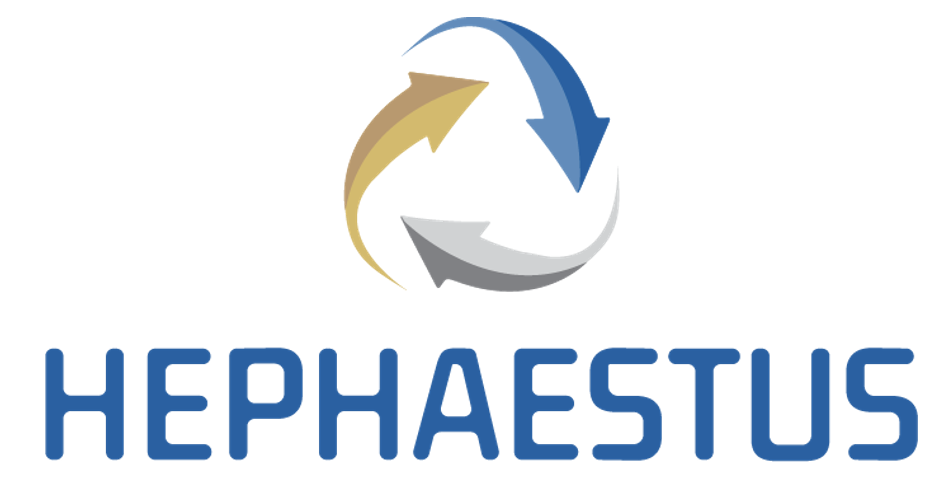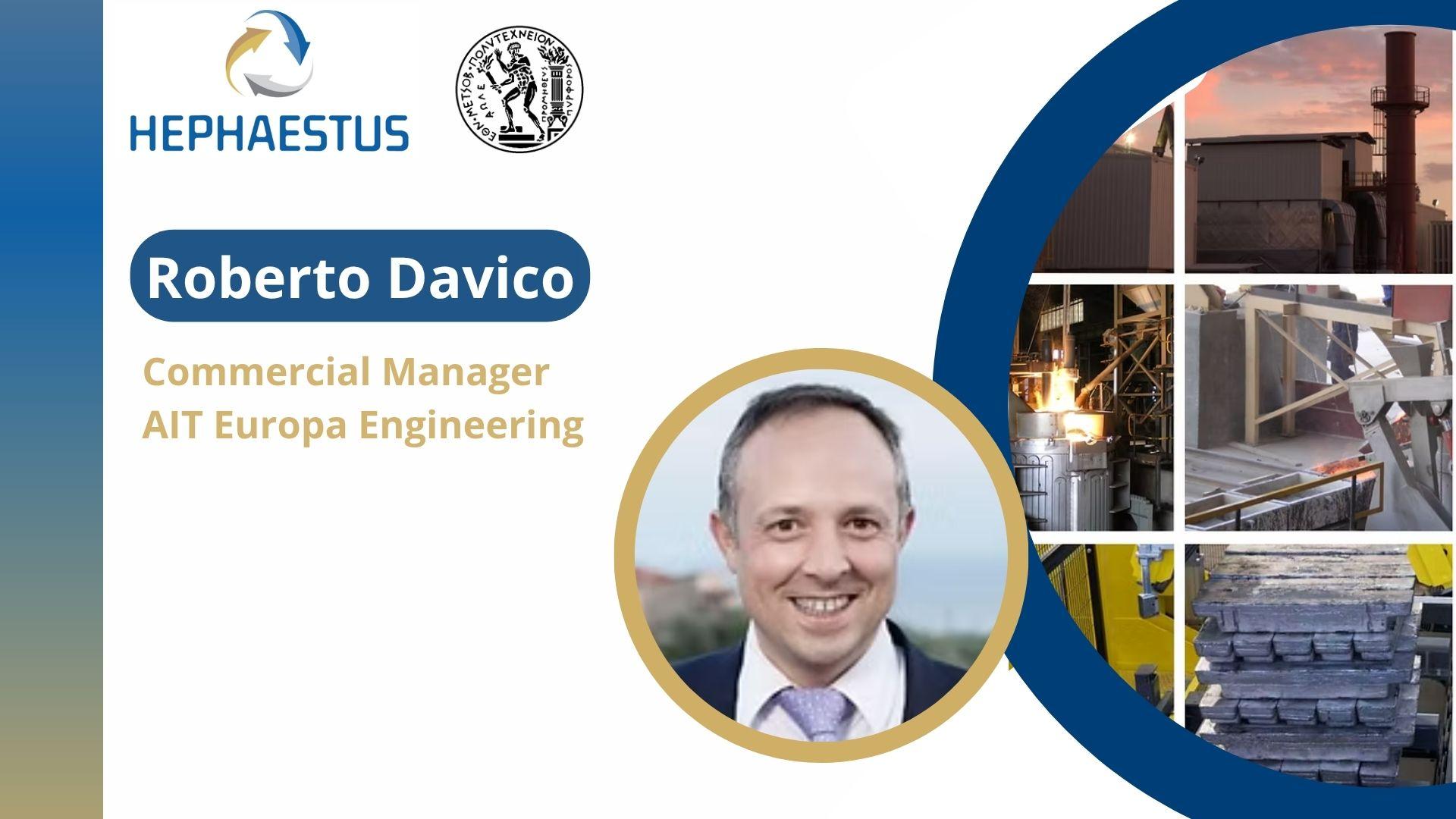What is the expertise of AIT and company’s role within the project?
AIT (AIT Europa Engineering) is an Italian company started in 2019. AIT stands for Applied Industrial Technologies. AIT possesses deep technical expertise in recovering metals from inert dusts, primarily generated by metallurgical and mining extraction processes, including iron, nickel, chromium, copper, tin, platinum, and others. Specifically, AIT has developed the Cleantech technology, the core of the HEPHAESTUS Project, applied to electric arc furnaces for the efficient recovery of the ferrous fraction of steelmaking dust. We believe that safeguarding the environment is achievable only through the development and application of innovative technologies like ours, which can balance environmental policy objectives with profitability.
Our goal in this project is to help eliminate the harmful environmental impacts of this hazardous waste through an integrated process (pyro- and hydrometallurgical) that transforms it safely and sustainably into products and by-products.
Our role in the HEPHAESTUS Project is to build an industrial-scale Cleantech plant in our Italian demo site and conduct tests on 800 tons of EAF (Electric Arc Furnace) dust coming from our partner Arvedi AST, to validate the process from both a technical and economic perspective.
Which work package (WP) are you involved in and how is the work going?
We are involved in all WPs except for WP8. We are responsible for WP4, which refers to the Cleantech process and services dimensioning, the integrated system design and the tailoring of the AAC and MSA processes for the recovery of Zn. This WP has been completed already. After the grant agreement amendment, we also became responsible for WP5 which concerns the actual creation of the demo plant in Italy and the different testing activities to be conducted in the different sites, laboratories and demo plants in Belgium, Italy and Greece.
I would like to say a word about the consortium which, in my opinion, is doing a great job under the coordination of RINA. All AIT team is grateful to the partners and their commitment. It’s an honor and a pleasure to work together with all of them. From my personal perspective, the works done in WP6 are of particular interest. The market research and the LCA outcomes confirm, so far, the importance of the HEPHAESTUS in the steel, mineral wool and zinc sectors.
What makes HEPHAESTUS particularly relevant in today’s context?
Electric steel production generates approximately 1.2M T dust in Europe.
Ferritic dusts from carbon steel production are mostly processed in Waelz plants (a more than 100 years old technology) which can recover only the 20% ZnO fraction. The 80% of other elements approximately are disposed in landfill in form of slag, creating a negative environmental impact. While the Waelz technology is economically sustainable, it does not solve the negative environmental impact of the carbon steel dusts.
Austenitic dusts from stainless steel are disposed in landfill and partially processed through plasma furnaces or EAF. Both technologies can recover the ferrous metal, but in a less efficient way than our Cleantech furnace, because they are not able to process the dusts directly without previous briquetting, they do not work in a continues feeding configuration and they have lesser metal recovery rate.
The HEPHAESTUS integrated system will make economically sustainable to process ferritic or austenitic dusts by:
– recovering the ferrous metals in form of ingots through the Cleantech furnace,
– directly process the molten slag to produce mineral wool blankets,
– recovering the Zn fraction in Zn ingots through the Ezinex process
This innovation will make the steel dust recycling an environmentally friendly practice, with a highly positive impact on GHG emission, transforming a hazardous waste into a resource, without producing wastes.
Another important feature consists of the Carbon Capture (the CO2 generated by the smelting process) and its transformation into methanol, which is part of HEPHAESTUS research project. This could determine a turning point on the competitiveness of the entire steel industry, not only the cleantech process applied to EAF dusts.
How do you envision the future of steel production?
Steel production in Europe will focus on sustainability, with hydrogen-based methods (green hydrogen from renewables used instead of coke has reagent in the melting process) likely to reduce its carbon footprint. Economic challenges, like high energy costs, will push for policy support. For example, the Carbon Border Adjustment Mechanism, which is a form of protectionist policy based on environmental impact equality, could help to increase the competitiveness of the European steel producers.
Technological innovation, such as innovation applied to electric arc furnaces, is becoming crucial for competitiveness and is expected to be key, with increased use of EAFs and scrap recycling likely to improve efficiency and reduce emissions. Investments in new technologies, potentially costing up to €100 billion by 2050, suggest a transformative period ahead, focusing on low-carbon solutions.
In this context, the Hephaestus project outcomes could play an important role for the technological innovation of the steel sector by increasing its competitiveness while producing an overall positive environmental impact with a reduction of CO2 emissions and natural resources consumption.



